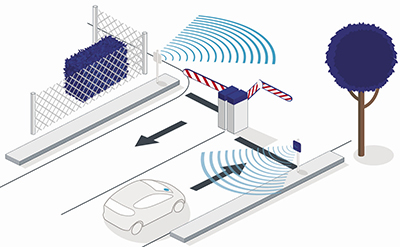RFID (Radio-Frequency Identification) technology can have both short-range and long-range capabilities, depending on the frequency used and the specific RFID system design. RFID systems typically operate in three main frequency bands: low frequency (LF), high frequency (HF), and ultra-high frequency (UHF). Each frequency band has its own characteristics and is suitable for different applications, including short-range and long-range scenarios.
Low Frequency (LF):
LF RFID operates in the frequency range of 125 kHz.
It is commonly used for short-range applications, such as access control systems and animal identification.
Typical read ranges are limited to a few centimeters up to a couple of meters.
High Frequency (HF):
HF RFID operates at frequencies around 13.56 MHz.
It is often used in applications like contactless smart cards, public transportation cards, and some access control systems.
Read ranges are generally limited to a few centimeters to about one meter.

Ultra-High Frequency (UHF):
UHF RFID operates in the frequency range of 860 MHz to 960 MHz.
UHF RFID is known for its longer read ranges and is commonly used for inventory tracking, supply chain management, and logistics.
Depending on the specific UHF RFID system and environmental factors, read ranges can vary from several meters to over 10 meters.
UHF RFID is the most common choice for long-range applications due to its ability to penetrate materials and travel longer distances. However, it's important to note that the effective read range of an RFID system can be influenced by factors such as antenna design, power levels, interference, and the presence of materials that can absorb or reflect radio waves.
In summary, while LF and HF RFID are generally associated with shorter ranges, UHF RFID is often used for long-range applications, making it suitable for various industrial and logistical uses.
Prev News:What is the maximum range of RFID cards?
Next News:What is the longest range for RFID reader?
